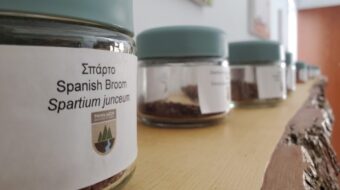The U.S. food system has a new bedfellow, and it may already be on your plate.
Increasingly, the coatings that keep supermarket produce fresh looking and the chemicals used in pesticide-intensive farming are incorporating nanotechnology – a technology still in its infancy. Is it safe? And, perhaps more importantly, is it really necessary?
Nanotechnology, put simply, is the science of manipulating materials at tiny atomic levels to enhance or create certain novel properties that can often only be seen with a microscope. In agriculture, one of the applications of nanotechnology involves increasing the plant surface area to which toxic pesticides are effectively applied – reducing the amount of pesticides needed. The risk? Making the pesticide more “available” to plants could also make it more available to the farmworkers that apply it or to the consumers eventually handling the produce and eating their fruits and veggies.
Currently, like all other U.S. agencies, the Environmental Protection Agency has no regulations to ensure that nanotechnology products introduced into the market are safe for human health and the environment. As the estimated 888 million pounds of pesticides applied annually in the U.S. gradually employ more and more nanotechnology, all under the EPA’s purview, regulators have a lot of catching up to do.
The potential risks identified in laboratory experiments could have major consequences. For instance, according to the Institute for Agriculture and Trade Policy’s latest report, “Racing Ahead: U.S. Agri-Nanotechnology in the Absence of Regulation,” Chinese researchers have discovered in animal testing that the absorption of nano-silver could interfere with the replication of DNA molecules and possibly reroute molecular networks, causing genetic mutations. While several companies have applied to allow pesticides with nano-silver into the marketplace, the EPA believes there are already unapproved and unregulated pesticides with nano-silver being used.
Encouragingly, the EPA, along with the Food and Drug Administration, has taken the first step toward regulation and issued draft voluntary guidance to industry on reporting nano-pesticide data and studies, but there is still much to be done. Currently, if the FDA does not object to a company’s determination that a material is safe, a company could incorporate the material’s nano-sized counterpart into products without reporting it to the FDA. This lack of oversight is cause for concern.
Nanotechnology in the food system extends beyond pesticide use. Nanomaterial residues in coated produce that could potentially fail to be washed away by consumers are already reportedly being exported from Latin America to the United States – without safety assessment or regulation.
With the myriad of potential risks to health, worker safety, and the environment, it seems like a no-brainer that nanotechnology developers should be required to submit safety and environmental data for agency review before going to market. While U.S. agencies debate how much to regulate products with nanomaterials, they continue to be developed and deployed – some as part of the U.S. food system.
Is the use of nanotechnology in food production really necessary? Are the potential risks to health and the environment worth the claimed benefits? Probably not. Strategies already exist for reducing pesticide use in food production, and it’s certainly more affordable for us to avert a food safety crisis than to deal with its aftermath. While the agencies’ first step toward regulation is encouraging, it’s likely not enough to inspire companies to publicly self-regulate, since many of their applications are classified as confidential business information.
The EPA’s draft guidance is open to public comment until Aug. 17. Let’s hope the message from commenters is clear: Collect all of the data on nanotechnology before putting U.S. farmworkers and consumers at risk.
Andrew Ranallo is the communications associate at the Institute for Agriculture and Trade Policy. This article originally appeared in Other Words, a project of the Institute for Policy Studies.










